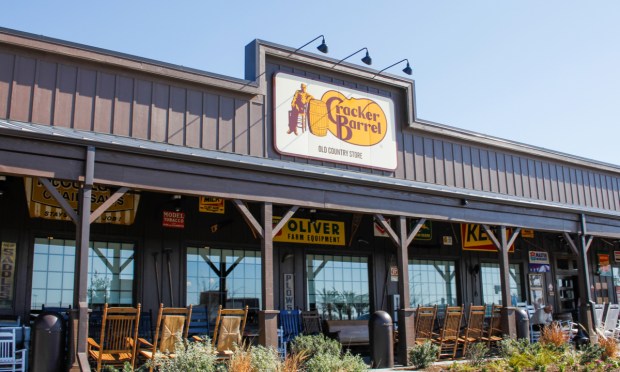Cracker Barrel Sees Inflation-Concerned Consumers Pulling Back on Full-Service Restaurants

As restaurant inflation rises, Cracker Barrel is seeing consumers dining out less frequently, even as they order as much as ever each visit.
The Tennessee-based restaurant and retail chain, which has roughly 660 locations across 45 states, shared on a call with analysts Tuesday (June 6) discussing the company’s third quarter FY2023 financial results that it is seeing traffic decline as prices rise.
“The one area where I think pricing throughout the industry may have impacted [consumer habits] would be frequency, especially with guests that are particularly impacted by economic insecurity,” Cracker Barrel Chief Marketing Officer Jen Tate said. “We believe they’re cutting back not on check but rather on the number of visits that they opt to spend on our category.”
Craig Pommells, the chain’s chief financial officer, added that the restaurant has seen “a noticeable drop in traffic” that began in March and grew steeper throughout April, a drop that came right around the time that restaurant price increases finally outpaced grocery for the first time throughout this inflationary period. Pommells added that the brand has observed this decline “across the entire industry.”
Indeed, consumers are cutting back. A PYMNTS survey of more than 2,300 U.S. restaurant customers revealed that roughly a third of consumers have been making purchases from restaurants less frequently amid inflation, while a far smaller share has been opting for cheaper menu items, and only a single-digit percentage of restaurant customers has decreased the amount of food per order.
That said, overall, the vast majority of consumers continue to spring for luxuries at least some of the time. The April edition of PYMNTS’ New Reality Check study “New Reality Check: The Paycheck-to-Paycheck Report – The Generational Deep Dive Edition,” created in collaboration with LendingClub, which drew from a survey of more than 3,300 U.S. consumers, revealed that 63% of consumers reported having spent $100 or more on a nonessential item or service in the prior three months.
Notably, for those thinking, “Is Cracker Barrel still relevant?” you are not alone. Rather than establishing a following with younger generations, the brand is struggling to break through with these diners.
“What we’re experiencing is some reduced visit frequency from the younger cohorts, which coincides with a sharp downturn in consumer sentiment among those younger cohorts,” Tate said, adding that the brand has made gains with these consumers over the last couple of years but that the most recent quarter was “trickier.”
(Of course, some continue to patronize the chain, though not always for the most straightforward reasons. One PYMNTS employee, for instance, has been visiting the restaurant after receiving a gift card as a bridal shower gift from a friend who mistook the brand for Crate & Barrel.)
The challenges with traffic that Cracker Barrel has seen appear to be more relevant to full-service restaurants (FSRs) than their quick-service counterparts. Just last month, Restaurant Brands International, parent company of Burger King, Tim Hortons, Popeyes and Firehouse Subs, shared on its earnings call that it is not concerned about inflation affecting consumers’ quick-service restaurant (QSR) spending.
“In quick-service restaurants, we provide convenient and affordable food every day, and I think overall, from a big picture perspective, we’re in a good spot regardless of the macro environment that we’re in,” CEO Josh Kobza stated.

